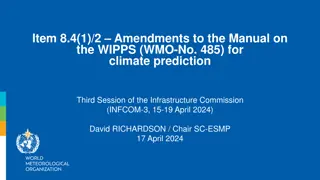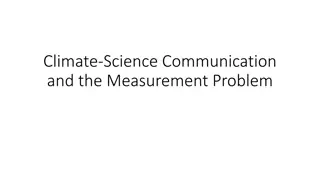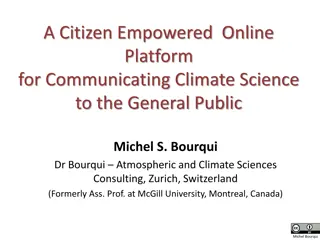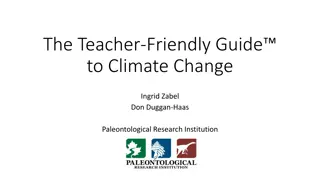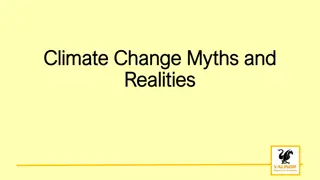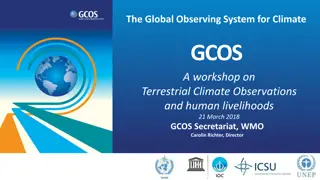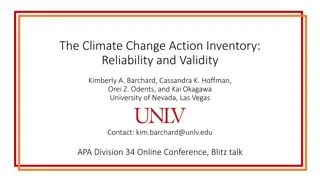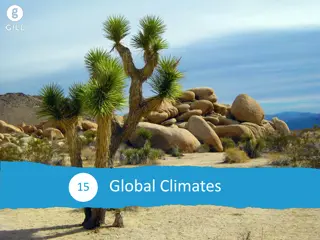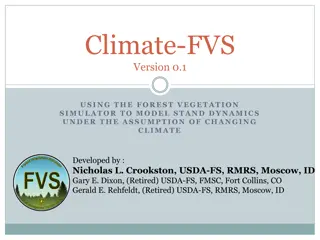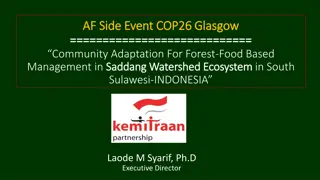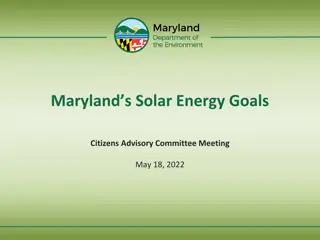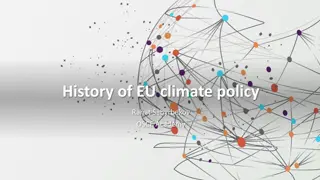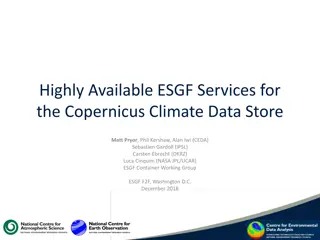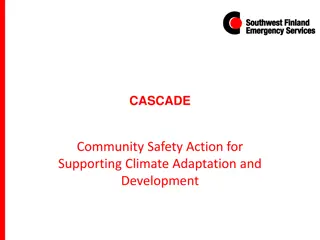Understanding Climate Science Fundamentals
Delve into the basics of climate science with topics such as the Stefan-Boltzmann Law, albedo, and effective temperature. Explore how factors like energy, temperature, and reflected sunlight play crucial roles in determining the climate of a planet. Gain insights into key concepts that help us understand the complexities of Earth's climate system.
Download Presentation

Please find below an Image/Link to download the presentation.
The content on the website is provided AS IS for your information and personal use only. It may not be sold, licensed, or shared on other websites without obtaining consent from the author. Download presentation by click this link. If you encounter any issues during the download, it is possible that the publisher has removed the file from their server.
E N D
Presentation Transcript
Lab 12: Climate Lab 12: Climate Hannah Daley Adapted from Justin Hicks
Lab updates: Lab updates: You will need a scientific calculator for lab this week. If you do not have one, use an online calculator (SHARING OF CALCULATORS WILL NOT BE ALLOWED) Next week will spend sometime outside No Final in AOSC201 No Extra Credit or curves (please see AOSC201 syllabus with any questions) I will drop your lowest grade or your first missed lab. This has already been applied to your grade in ELMS.
Stefan Stefan- -Boltzmann Law Boltzmann Law #1+2 E = AT4 Relates the energy given off by an object to the temperature of the object E = energy, = Boltzmann constant, A = area (in the case of this lab, the area of Earth), T = temperature We can substitute the amount of solar energy striking earth for energy (E) S Re2= AT4 Where S is the solar constant (what is emitted by the sun) and Reis the radius of the Earth
Albedo Albedo #3 An object s albedo is equivalent to the amount of sunlight it reflects (as a percentage of total sunlight it interacts with) Objects with high albedo (~1) reflect a lot of solar radiation Objects with low albedos (~0) absorb a lot of solar radiation A planet s albedo can affect its temperature Just because a planet is close to the sun doesn t mean it is hot it could have a large albedo and instead heats up due to a thick, greenhouse gas- laden atmosphere If albedo = , then the absorption of an object is equal to 1-
Effective Temperature Effective Temperature #3 We can find the temperature we d expect a planet to have (assuming it has no atmosphere) by taking into account its albedo this temperature is called the effective temperature We can find this temperature by rearranging the Stefan-Boltzmann law (#2) and using the surface-absorbed radiation in place of S, the solar constant Hint: S is the solar radiation that makes it to earth, but we want to find the amount of solar radiation that is absorbed by the earth Must take albedo into account
Greenhouse Gases Greenhouse Gases #5-11 A planet s temperature is factored by distance from the sun, albedo, thickness of atmosphere, composition of atmosphere (GHG) Greenhouse gases absorb infrared radiation, warming the atmosphere Common greenhouse gases: carbon dioxide, nitrous oxide, trop. ozone, CFCs and HFCs, methane, etc We can compute how much radiation these gases absorb (radiative forcing), as well as their effect on average global temperatures
Climate feedbacks Climate feedbacks #12-15 Change in the climate which has an effect that then causes further climatic change Ex: ice-albedo feedback Increasing temperatures increases the rate at which ice melts exposes more ocean water (albedo decreases) oceans warm more ice melts Need to account for these feedbacks in order to determine how much GHG have actually raised global temperatures
Aerosols Aerosols
Aerosols Aerosols #15-16 Aerosols are solids or liquids suspended in the atmosphere Can be natural (sea spray) or anthropogenic (soot) Aerosols reflect and scatter incoming solar radiation Typically have a cooling effect on the surface (except for black carbon, which absorbs solar radiation) Must account for feedbacks AND aerosols when determining how much anthropogenic activity has increased global temperatures As we clean our air and decrease the amount of aerosols in the atmosphere, we may lose the cooling effect that aerosols provide (this is why research is important and proactivity is required)








